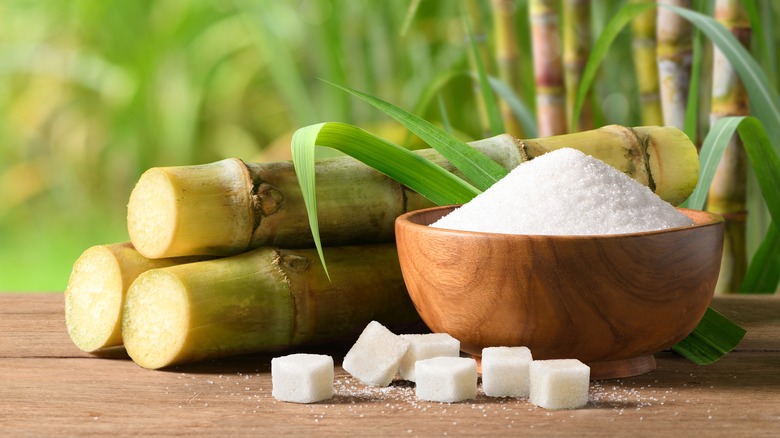Learning about beet sugar vs cane sugar can help shoppers decide which fits their lifestyle better.
Discover the Uses and Perks of Beet Sugar Vs Cane Sugar in Your Daily Diet
Exploring the unique top qualities of beet and cane sugar exposes more than just their sweetening capacities; it highlights their special influence on health and cookeries. Beet sugar, known for its refined flavor, is commonly preferred in fragile treats, whereas cane sugar, with its hint of molasses, adds splendor to robust recipes. Each type holds its own dietary account and glycemic effects, inviting a much deeper understanding of their functions in a well balanced diet plan and sustainable intake techniques.
Beginning and Manufacturing Procedures of Beet and Cane Sugar

The distinct climates and soil types needed for expanding sugar beetroots and sugarcane add to distinctions in their farming techniques and geographic circulation, affecting the economics and sustainability of their production. beet sugar vs cane sugar.
Nutritional Contrast In Between Beet Sugar and Cane Sugar
Despite originating from different plants, beet sugar and cane sugar are nutritionally extremely similar, both mostly being composed of sucrose. Each offers about 4 calories per gram, equating to about 16 calories per tsp. Structurally, both sugars are composed of approximately 99.95% sucrose, with minimal amounts of other materials like moisture and trace minerals, which do not considerably change their nutritional accounts.

Ultimately, when picking in between beet sugar and cane sugar based on dietary content alone, both offer identical benefits and disadvantages as they are essentially forms of the exact same particle-- sucrose, giving quick power without other nutrients.
Influence On Wellness: Glycemic Index and Caloric Material
Discovering additionally into the impacts of beet sugar and cane sugar on wellness, it read this post here is very important to consider their glycemic index and caloric content. Both sugars are identified as sucrose, which consists of glucose and fructose. This composition leads them to have a comparable effect on blood sugar level levels. The glycemic index (GI) of both beet and cane sugar is around 65, classifying them as high-GI foods, which can cause fast spikes in blood sugar degrees. This is a crucial facet for people handling diabetes or those attempting to maintain their power levels throughout the day.
Each kind of sugar contains about 4 calories per gram, making their calorie material matching. For those checking caloric intake, particularly when managing weight or metabolic health problems, comprehending this equivalence is vital (beet sugar vs cane sugar). Nonetheless, excessive consumption of any kind of high-calorie, high-GI food can add to wellness issues such as obesity, heart problem, and insulin resistance.
Environmental and Economic Considerations of Sugar Production
Beyond health influences, the manufacturing of beet and cane sugar likewise increases substantial ecological and economic problems. Sugar beet growing has a tendency to call for cooler climates and has a lower geographical footprint contrasted to sugar cane, which thrives in tropical regions.
In addition, making use click for info of pesticides and plant foods in both beet and cane sugar growing can bring about dirt destruction and air pollution, further affecting biodiversity and neighborhood water bodies (beet sugar vs cane sugar). The option in between growing sugar beet or cane typically rests on local environmental conditions and financial variables, making the sustainability of sugar have a peek at this website production a complicated concern
Culinary Applications and Taste Distinctions
While the environmental and financial facets of sugar production are certainly considerable, the option in between beet and cane sugar additionally influences cooking applications and flavor profiles. Beet sugar, stemmed from the sugar beet plant, is known for its incredibly neutral preference. This makes it a flexible active ingredient in baking, where it does not modify the taste of various other elements. It dissolves promptly and is ideal for use in cakes, cookies, and pastries.
Walking stick sugar, removed from sugarcane, typically maintains molasses traces, which give a distinct splendor and depth. The minor variation in wetness material in between beet and cane sugar can affect the appearance and uniformity of recipes, making cane sugar a preferred selection for details dishes that profit from its unique properties.

Conclusion
In final thought, both beet and cane sugar have distinct origins and production procedures, offering comparable dietary accounts with minor distinctions in salt content and flavor. While their influence on health, particularly regarding glycemic index and calories, is comparable, the option between them usually comes down to environmental, economic factors, and certain culinary needs. Understanding these aspects can lead customers in making informed choices that align with their health and wellness objectives and flavor preferences.